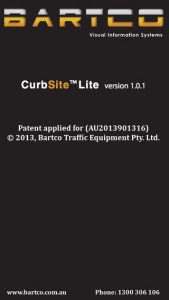Already generating considerable interest in the events sector, MVIS’ Solar 2012 multi-use trailer platform is the world’s first product facilitating the mounting of multiple information and lighting products on a single, solar powered, mobile platform.
The platform can be used by event organisers as part of their traffic management system, and also as a vital venue tool in the provision of information and lighting services.
Capable of accommodating a changing array of MVIS products, the cost-saving Solar 2012 presents organisers with the opportunity to mount all their equipment on a single platform. Easily portable, the platform is simple to deploy, requiring no civil engineering and third party communications, and so requires only a low level of manpower. Its solar power source means that it does not need charging and is totally reliable, being independent of often unpredictable power supplies. It is also silent and does not generate fumes.
The trailer may be deployed on route to events, maintaining a selection of MVIS’ temporary Intelligent Transport System (ITS) equipment designed to help ensure the smooth flow of traffic to and from the venue. This equipment ranges from the Variable Message Signs (VMS) used at the Olympics, to CCTV, radar and Automatic Number Plate Recognition systems.
It may also be effectively used at the venue itself, as the VMS signs may be used to transmit not only rapidly changing visitor information, but also to advertise event details and sponsors. MVIS’ Solar 6K temporary events lighting solution can be supported by the platform.
The operational and cost-saving capacity of the platform serves to enhance the efficiency benefits of the individual products accommodated. The VMS signs are high impact and allow messages to be updated quickly and easily from any internet enabled device. This means that they can be deployed in fewer numbers than standard static signs, reducing the need for the high manpower levels often associated with sign installation and management.
Developed in response to growing demand within the events sector for a mobile, multiple application product, the Solar 2012 has just undergone testing in the film industry, where it has been used in conjunction with Solar 6K lighting on sets in the North West.
MVIS managing director, Tony Price, has no doubt that the product will quickly be adopted by the events sector: “The Solar 2012 gives organisers of events of all sizes, not just those on an Olympic scale, the opportunity to multiply the operational efficiency and cost-saving benefits provided by our individual products.
“These benefits can be enjoyed both by organisers using our ITS equipment to manage traffic to events, and also by those deploying our information and lighting products at the venues themselves.
“MVIS is highly experienced in the events sector and committed to responding to the market’s evolving needs, with the development of new solutions utilising the latest technology. The Solar 2012 is testament to this experience, expertise and dedication.”
In what is believed to be the largest single deployment of solar powered VMS in the world, MVIS deployed almost 200 VMS units for the Olympic Route Network, enabling key participants, such as athletes and officials, to travel safely, securely and efficiently between venues and their accommodation, while also keeping London and the rest of the UK moving.
As the event closed, TfL’s London streets traffic control centre operations manager, Esmon George MBE MILT, contacted MVIS to thank the company for its “outstanding support”, adding: “We couldn’t have achieved what we did without you”.


